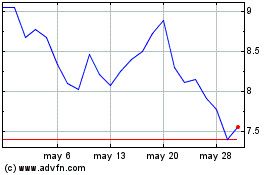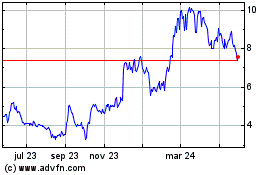Combination of COYA 301 + GLP-1 receptor agonists (GLP-1 RA) may
present a promising multi-pathway targeted approach for additive
and/or synergistic anti-inflammatory functions for the potential
treatment of inflammatory diseases, including neurodegenerative,
autoimmune, and metabolic conditions;
Data supporting these patents indicate that COYA 301 and GLP-1
RA combinations may have an additive and/or synergistic
anti-inflammatory effect on multiple cell types, including
enhancement of regulatory T cell function, suppression of
pro-inflammatory myeloid and T cells, and repolarization of these
cells to anti-inflammatory phenotypes;
Proposed proprietary combinations will expand Coya’s pipeline
and has potential to expand the GLP-1 market beyond the approved
indications of diabetes and obesity, while opening the door to
strategic partnerships and scientific collaborations
Coya Therapeutics, Inc. (NASDAQ: COYA) (“Coya” or the
“Company”), a clinical-stage biotechnology company developing
biologics intended to enhance regulatory T cell (Treg) function,
announces the filing of intellectual property protection for the
combination of COYA 301, or recombinant human low dose
interleukin-2 (LD IL-2), and Glucagon-Like Peptide-1 receptor
agonists (GLP-1 RAs).
Dr. Arun Swaminathan, Coya’s Chief Business Officer, stated,
“There has been an upswing in interest from major pharma companies
looking to expand their GLP-1 RA pipeline including testing
combination mechanistic approaches. The combination of low-dose
IL-2 with GLP-1 RAs could offer a differentiated approach to
addressing multiple conditions, including in neurodegenerative
conditions such as Alzheimer’s Disease, in which GLP-1 RAs have
recently shown promise. We believe the potential of this
proprietary combination could lead to value-creating business
development partnerships.”
There has been extensive commercial success using the GLP-1 RA
class for the treatment of diabetes and obesity. GLP-1 RAs have
anti-inflammatory and anti-oxidant effects that may contribute to
their overall glucose-lowering benefits. The influence of GLP-1 RAs
on inflammatory pathways provides an opportunity to optimize these
effects by combining with LD IL-2 mediated Treg enhancement.
GLP-1 RAs and LD IL-2 act through distinct mechanisms of action
to exert anti-inflammatory and Treg-enhancing effects and may make
this multi-targeted therapeutic approach an appealing combination
to potentially address the unmet needs of patients with severe
systemic and neuro-inflammatory, autoimmune, and metabolic
conditions. Such dynamic and complex conditions may benefit from
the combination treatments that address multiple pathophysiological
pathways simultaneously. Specifically, LD IL-2 is a cytokine
essential for the enhancement of Treg function and numbers
suppressing inflammatory responses, while GLP-1 RAs possess
neuroprotective and anti-inflammatory properties via modulation of
microglial activity, reduction of oxidative stress, and promotion
of neuronal survival. Coya is currently investigating these
combinations to potentially bring forward an optimized novel
therapeutic approach towards several diseases.
Dr. Howard Berman, Coya’s Chief Executive Officer, added, “We
believe that combination immunotherapy approaches will evolve to
play a meaningful role in treating complex immune-based diseases,
that are driven by a host of pathophysiologic mechanisms. A COYA
301/GLP-1 RA combination targets multiple, independent, and
non-overlapping immune pathways simultaneously and aligns with our
combination R&D strategy as seen with COYA 302, which is the
combination of COYA 301 and CTLA-4 Ig (commercially known as
Abatacept) and which is being evaluated in numerous
neurodegenerative disease models, such as Amyotrophic Lateral
Sclerosis, Alzheimer’s and Parkinson’s diseases. We will continue
to expand our portfolio with additional synergistic drug
combinations with COYA 301.”
About COYA 301
COYA 301 is the company’s proprietary investigational low-dose
interleukin-2 (IL-2) intended to enhance the anti-inflammatory
function regulatory T cells (Tregs) and is designed for
subcutaneous administration.
About COYA 302
COYA 302 is an investigational and proprietary biologic
combination therapy with a dual immunomodulatory mechanism of
action intended to enhance the anti-inflammatory function of
regulatory T cells (Tregs) and suppress the inflammation produced
by activated monocytes and macrophages. COYA 302 is comprised of
proprietary low dose interleukin-2 (LD IL-2) and CTLA-4 Ig and is
being developed for subcutaneous administration for the treatment
of patients with ALS, FTD, and PD. These mechanisms may have
additive or synergistic effects.
In February of 2023, Coya announced results from a
proof-of-concept, open-label clinical study evaluating commercially
available LD IL-2 and CTLA-4 Ig in a small cohort of patients with
ALS conducted at the Houston Methodist Research Institute (Houston,
Texas) by Stanley Appel, M.D., Jason Thonhoff, M.D., Ph.D., and
David Beers, Ph.D. This study was the first-of-its-kind evaluating
this dual-mechanism immunotherapy for the treatment of ALS.
Patients in the study received investigational treatment for 48
consecutive weeks and were evaluated for safety and tolerability,
Treg function, serum biomarkers of oxidative stress and
inflammation, and clinical functioning as measured by the ALSFRS-R
scale.
During the 48-week treatment period, the therapy was well
tolerated. The most common adverse event was mild injection-site
reactions. No patient discontinued the study, and no deaths or
other serious adverse events were reported.
Patients' disease progression was measured using the ALSFRS-R
scale, a validated rating tool for monitoring the progression of
disability in patients with ALS. The mean (±SD) ALSFRS-R scores at
week 24 (33.75 ±3.3) and week 48 (32 ±7.8) after initiation of
treatment were not statistically different compared to the ALSFRS-R
score at baseline (33.5 ±5.9), suggesting significant amelioration
in the progression of the disease over the 48-week treatment
period.
Treg suppressive function, expressed as percentage of inhibition
of proinflammatory T cell proliferation, showed a statistically
significant increase over the course of the treatment period and
was significantly reduced at the end of the 8-week washout
post-treatment period. Treg suppressive function at 24 weeks (79.9
±9.6) and 48 weeks (89.5 ±4.1) were significantly higher compared
to baseline (62.1 ±8.1) (p<0.01), suggesting enhanced and
durable Treg suppressive function over the course of treatment. In
contrast, Treg suppressive function (mean ±SD) was significantly
decreased at the end of the 8-week washout period compared to
end-of-treatment at week 48 (70.3 ±8.1 vs. 89.5 ±4.1, p
<0.05).
The study also evaluated serum biomarkers of inflammation,
oxidative stress, and lipid peroxides. The available data up to 16
weeks after initiation of treatment suggest a decrease in these
biomarker levels, which is consistent with the observed enhancement
of Treg function. The evaluation of the full biomarker data is
ongoing.
COYA 302 is an investigational product not yet approved by the
FDA or any other regulatory agency.
About Coya Therapeutics, Inc.
Headquartered in Houston, TX, Coya Therapeutics, Inc. (Nasdaq:
COYA) is a clinical-stage biotechnology company developing
proprietary treatments focused on the biology and potential
therapeutic advantages of regulatory T cells (“Tregs”) to target
systemic inflammation and neuroinflammation. Dysfunctional Tregs
underlie numerous conditions, including neurodegenerative,
metabolic, and autoimmune diseases, and this cellular dysfunction
may lead to sustained inflammation and oxidative stress resulting
in lack of homeostasis of the immune system.
Coya’s investigational product candidate pipeline leverages
multiple therapeutic modalities aimed at restoring the
anti-inflammatory and immunomodulatory functions of Tregs. Coya’s
therapeutic platforms include Treg-enhancing biologics,
Treg-derived exosomes, and autologous Treg cell therapy.
COYA 302 – the Company’s lead biologic investigational product
or “Pipeline in a Product”– is a proprietary combination of COYA
301 (Coya’s proprietary LD IL-2) and CTLA4-Ig for subcutaneous
administration with a unique dual mechanism of action that is now
being developed for the treatment of Amyotrophic Lateral Sclerosis,
Frontotemporal Dementia, Parkinson’s Disease, and Alzheimer’s
Disease. Its multi-targeted approach enhances the number and
anti-inflammatory function of Tregs and simultaneously lowers the
expression of activated microglia and the secretion of
pro-inflammatory mediators. This synergistic mechanism may lead to
the re-establishment of immune balance and amelioration of
inflammation in a sustained and durable manner that may not be
achieved by either low-dose IL-2 or CTLA4-Ig alone.
For more information about Coya, please visit
www.coyatherapeutics.com
Forward-Looking Statements
This press release contains “forward-looking” statements that
are based on our management’s beliefs and assumptions and on
information currently available to management. Forward-looking
statements include all statements other than statements of
historical fact contained in this presentation, including
information concerning our current and future financial
performance, business plans and objectives, current and future
clinical and preclinical development activities, timing and success
of our ongoing and planned clinical trials and related data, the
timing of announcements, updates and results of our clinical trials
and related data, our ability to obtain and maintain regulatory
approval, the potential therapeutic benefits and economic value of
our product candidates, competitive position, industry environment
and potential market opportunities. The words “believe,” “may,”
“will,” “estimate,” “continue,” “anticipate,” “intend,” “expect,”
and similar expressions are intended to identify forward-looking
statements.
Forward-looking statements are subject to known and unknown
risks, uncertainties, assumptions and other factors including, but
not limited to, those related to risks associated with the impact
of COVID-19; the success, cost and timing of our product candidate
development activities and ongoing and planned clinical trials; our
plans to develop and commercialize targeted therapeutics; the
progress of patient enrollment and dosing in our preclinical or
clinical trials; the ability of our product candidates to achieve
applicable endpoints in the clinical trials; the safety profile of
our product candidates; the potential for data from our clinical
trials to support a marketing application, as well as the timing of
these events; our ability to obtain funding for our operations;
development and commercialization of our product candidates; the
timing of and our ability to obtain and maintain regulatory
approvals; the rate and degree of market acceptance and clinical
utility of our product candidates; the size and growth potential of
the markets for our product candidates, and our ability to serve
those markets; our commercialization, marketing and manufacturing
capabilities and strategy; future agreements with third parties in
connection with the commercialization of our product candidates;
our expectations regarding our ability to obtain and maintain
intellectual property protection; our dependence on third party
manufacturers; the success of competing therapies or products that
are or may become available; our ability to attract and retain key
scientific or management personnel; our ability to identify
additional product candidates with significant commercial potential
consistent with our commercial objectives; ; and our estimates
regarding expenses, future revenue, capital requirements and needs
for additional financing.
We have based these forward-looking statements largely on our
current expectations and projections about future events and trends
that we believe may affect our financial condition, results of
operations, business strategy, short-term and long-term business
operations and objectives, and financial needs. Moreover, we
operate in a very competitive and rapidly changing environment, and
new risks may emerge from time to time. It is not possible for our
management to predict all risks, nor can we assess the impact of
all factors on our business or the extent to which any factor, or
combination of factors, may cause actual results to differ
materially from those contained in any forward-looking statements
we may make. In light of these risks, uncertainties and
assumptions, the forward-looking events and circumstances discussed
herein may not occur and actual results could differ materially and
adversely from those anticipated or implied in the forward-looking
statements. Although our management believes that the expectations
reflected in our forward-looking statements are reasonable, we
cannot guarantee that the future results, levels of activity,
performance or events and circumstances described in the
forward-looking statements will be achieved or occur. We undertake
no obligation to publicly update any forward-looking statements,
whether written or oral, that may be made from time to time,
whether as a result of new information, future developments or
otherwise.
View source
version on businesswire.com: https://www.businesswire.com/news/home/20240731277398/en/
Investor Contact David
Snyder, CFO david@coyatherapeutics.com
CORE IR Bret Shapiro brets@coreir.com 561-479-8566
Media Contacts For Coya
Therapeutics: Kati Waldenburg media@coyatherapeutics.com
212-655-0924
Coya Therapeutics (NASDAQ:COYA)
Gráfica de Acción Histórica
De Jul 2024 a Jul 2024

Coya Therapeutics (NASDAQ:COYA)
Gráfica de Acción Histórica
De Jul 2023 a Jul 2024
